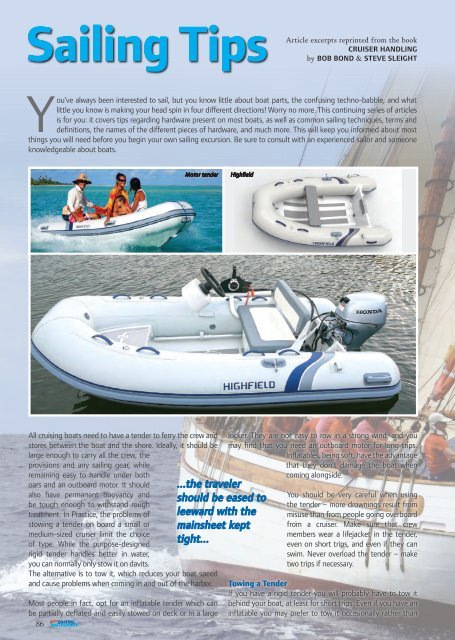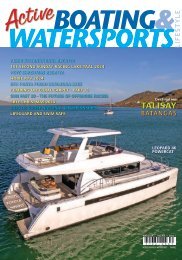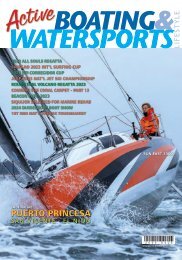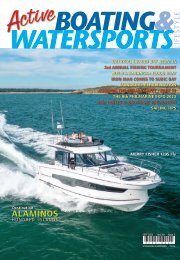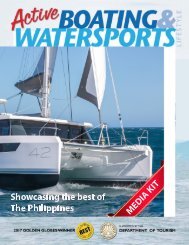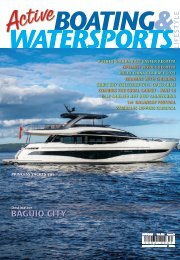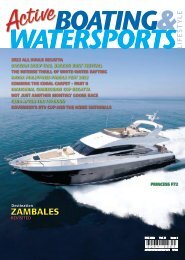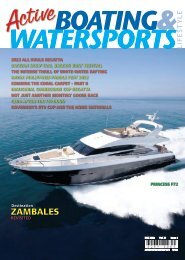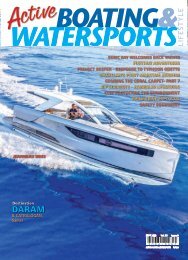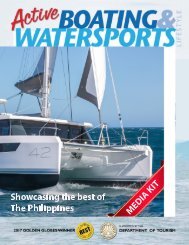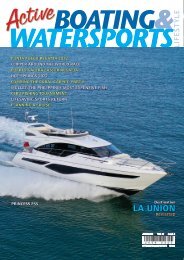You also want an ePaper? Increase the reach of your titles
YUMPU automatically turns print PDFs into web optimized ePapers that Google loves.
Sailing Tips<br />
Article<br />
excerpts reprinted from the book<br />
CRUISER HANDLING<br />
by BOB BOND & STEVE SLEIGHT<br />
You’ve always been interested to sail, but you know little about boat parts, the confusing techno-babble, and what<br />
little you know is making your head spin in four different directions! Worry no more. This continuing series of articles<br />
is for you: it covers tips regarding hardware present on most boats, as well as common sailing techniques, terms and<br />
definitions, the names of the different pieces of hardware, and much more. This will keep you informed about most<br />
things you will need before you begin your own sailing excursion. Be sure to consult with an experienced sailor and someone<br />
knowledgeable about boats.<br />
Motor tender<br />
Highfield<br />
All cruising boats need to have a tender to ferry the crew and<br />
stores between the boat and the shore. Ideally, it should be<br />
large enough to carry all the crew, the<br />
provisions and any sailing gear, while<br />
remaining easy to handle under both<br />
oars and an outboard motor. It should<br />
also have permanent buoyancy and<br />
be tough enough to withstand rough<br />
treatment. In Practice, the problems of<br />
stowing a tender on board a small or<br />
medium-sized cruiser limit the choice<br />
of type. While the purpose-designed<br />
rigid tender handles better in water,<br />
you can normally only stow it on davits.<br />
The alternative is to tow it, which reduces your boat speed<br />
and cause problems when coming in and out of the harbor.<br />
Most people in fact, opt for an inflatable tender which can<br />
be partially deflated and easily stowed on deck or in a large<br />
86<br />
...the traveler<br />
should be eased to<br />
leeward with the<br />
mainsheet kept<br />
tight...<br />
locker. They are not easy to row in a strong wind, and you<br />
may find that you need an outboard motor for long trips.<br />
Inflatables, being soft, have the advantage<br />
that they don’t damage the boat when<br />
coming alongside.<br />
You should be very careful when using<br />
the tender – more drownings result from<br />
misuse than from people going overboard<br />
from a cruiser. Make sure that crew<br />
members wear a lifejacket in the tender,<br />
even on short trips, and even if they can<br />
swim. Never overload the tender – make<br />
two trips if necessary.<br />
Towing a Tender<br />
If you have a rigid tender you will probably have to tow it<br />
behind your boat, at least for short trips. Even if you have an<br />
inflatable you may prefer to tow it occasionally rather than


